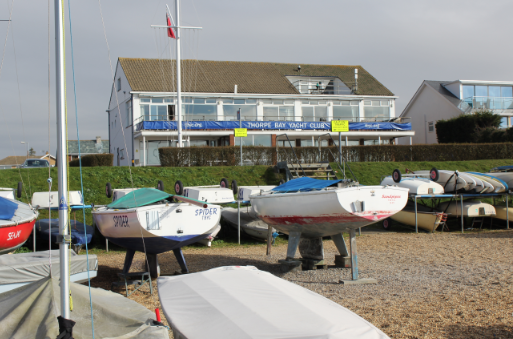Around 25 members resign
A haul-out accident at a yacht club in which a sailor had one of his fingers torn off – sparking calls for RYA health and safety guidelines for amateur lay-ups – has seen 25 cruiser members resign, YM has been told.
The Thorpe Bay Yacht Club in Southend-on-Sea, Essex is now virtually a dinghy club because of a ban on members hauling their own boats in and out of the water. Following the accident members were told they must use professionals.
Yachting Monthly reported exclusively in the May issue how member Gordon Sanders lost a finger under a lifting ring, and how the accident could have serious implications for thousands of DIY launchings and haul-outs around the UK. The incident sparked a call for RYA guidelines to be drawn up in a bid to combat ‘gravy train’ law suits.
Mr Sanders, a former commodore, was assisting with the lift-out of the Sandhopper fleet at the club when one of his fingers was trapped beneath the lifting ring and ripped off.
After putting in a claim through his insurance company the club’s lift out policy was investigated and it has been decided that no more lay-ups should be carried out by members, instead professional operators must be engaged.
This has seen prices for hauling out rocket from £250 apiece to as much as £600. As a result several members have resigned.
The 65-year-old club, founded by the late offshore racing champ Kit Hobday, has 1,200 members, but only 80 or so are cruising members and so their lobby wasn’t strong enough to over-rule the new club rules.
A member who did not wish to be identified, but whose name is known to YM, told us: ‘The lift out has always been done by the cruiser section hiring two cranes and a flatbed truck from a local farmer, one crane would lift the boat out of the water and onto the truck, the truck would then trundle across the road to the dinghy park, where the other crane would lift it off the truck, the fitting of strops and securing the boat to the trailer has always been done by members, with an exemplary record.
‘Now, because of health & safety rules if we want to continue with the DIY lift out we would have to carry out a contract lift which would involve a professional crew carrying out every aspect of the lift making it much more expensive.’
The cruiser section asked the club to find £5,000 towards the cost of the lifts whilst alternatives were looked into, including the building of a special rig, club members getting the necessary H & S certification, and paying an insurance premium.
‘But all of this was turned down by the committee with almost no discussion. There is now a gulf between the dinghy and cruiser section – an us and them situation.
‘The cruiser section members pay their subs and other charges – they have contributed towards a £55,000 Prout catamaran bought to act as the ‘committee boat’ as well as new RIBs. We in the cruiser section have never asked for anything and the one time we did we were turned down out of hand.’
Mr Sanders told YM: ‘It was fairly unpleasant, I lost my ring finger.’
Nick Elmore, commodore of the club, told YM: ‘Because it affects so few members, the economics of the lift out combined with health & safety concerns it put the club in a difficult position and we have stopped them doing it. It’s very unfortunate as it has made some people very upset. But we live in a world where nobody takes responsibility for what they do.’
Peter Clark of marine loss adjusters C Claims, told YM: ‘It’s very sad because sailing clubs as a whole, are run by perfectly capable people, but in these days of enthusiastic litigators, they need to be extraordinarily careful.’
Peter deals with between 20 and 30 claims for club laid-up boats falling over every year, and one case of a club’s mast-lifting crane which collapsed. He is calling for the RYA to investigate yacht club DIY activity and draw up guidelines. ‘The RYA are a body with substantial influence and could start a public debate which hopefully the Government would listen to in order to prescribe a scale of litigation and put a halt to the legal gravy train of overstated claims which, at present, exists in the UK and the US but not on the continent.’




